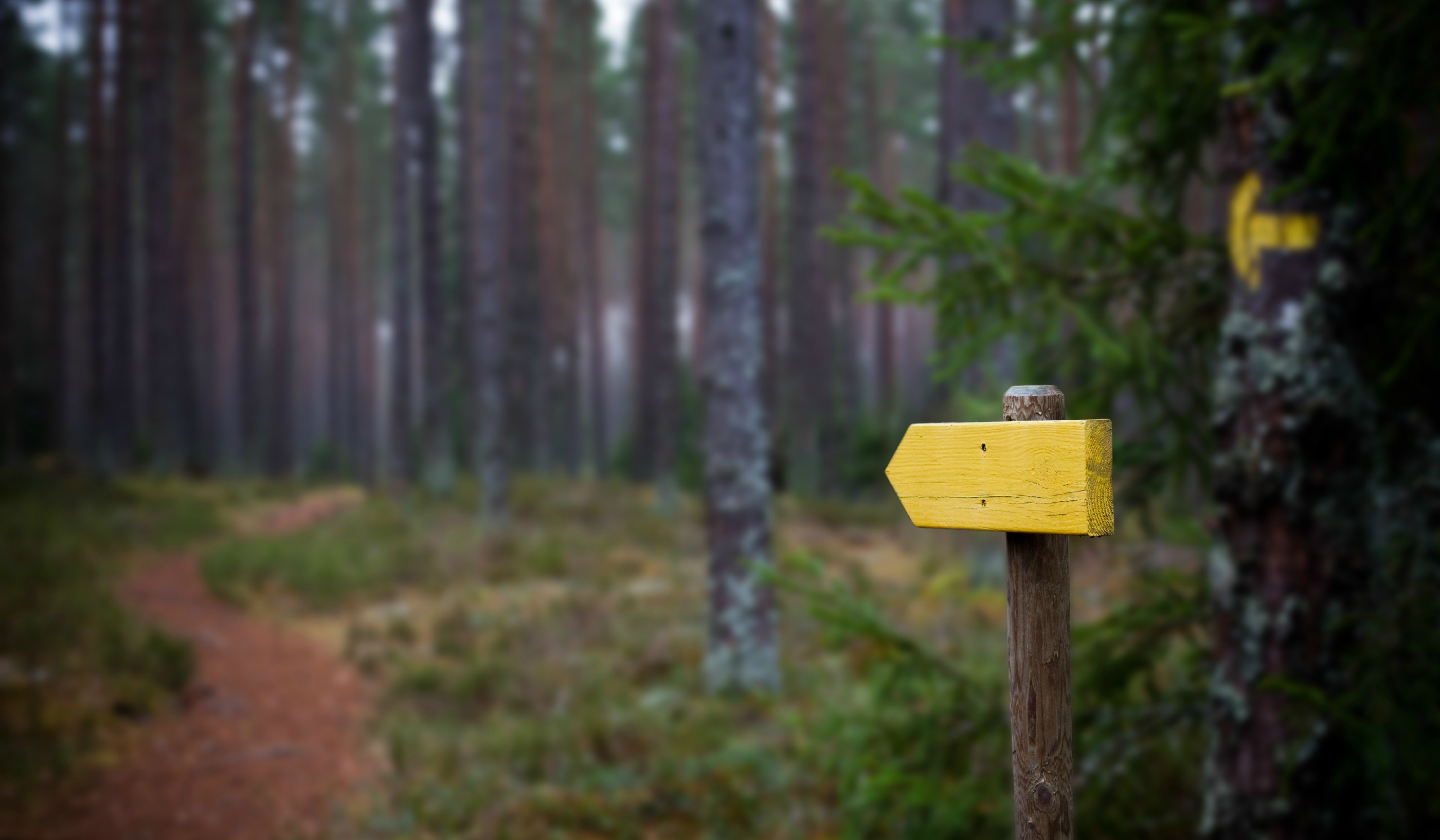Websites and Trail Races: It’s All About the Navigation
There is nothing to fear except fear itself. And also getting lost in the woods overnight.
My husband and I are both runners. Yet I had long hesitated to run a trail race for one reason: my fear of getting hopelessly lost in the woods. Last summer my husband coaxed me into a series of XTERRA trail races. But as the date of our first race approached, I became almost panic stricken that I would never find my way out of the trees. I saw myself wandering aimlessly as dusk approached, cold, tired, weak from lack of food, desperately hoping a search party was scouring the woods. (Did I mention I was planning to carry a cell phone and wear a GPS watch? Okay, I didn’t say my fear was rational.)
Luckily for me, the course organizers anticipated such fears and focused on my end-goal, which was to finish my first trail race without getting lost. They marked the course well with eye-level paint markings on trees, and they had plenty of course marshals in place to direct the runners. I managed to run 9.7 miles through a dense forest without getting lost once! (I did have other problems, like a face plant in a mud hole, but we won’t go there.)
So what does my personal trail running challenge have to do with websites?
It’s all about the navigation.
User experience architects know that key navigational wayfinders keep web users from getting hopelessly lost as they travel through a site. These wayfinders include:
- Global Navigation & Page Labels—Where am I?
- Local/Section Navigation—What’s nearby?
- Contextual Links—Where can I go from here?
It also may be wise to employ some form of supplemental navigation, such as:
- Breadcrumbs
- Fat Footer
- Site Map
These are the trail markers designed to keep the web runner aware of their location within the site structure as they move around. The amount of architectural structure required depends on the size of the site and the complexity of the content. Large, deep websites require more navigational structure than do small, shallow sites.
There is no one-size-fits-all solution.
So how do you know when you’ve gotten it right? Since navigation and findability account for the bulk of usability complaints, you should always test your site architecture on end-users. There’s much to be learned by simply giving them the task of finding key content on your site and then watching them go.
One thing I’ve learned in observing user testing is that users have very strong mental models of where they expect navigation to be and how it should work. If you plan to implement anything non-standard in terms of placement and/or design, always test it thoroughly first.
Without clear and consistent navigational wayfinders, websites and forest trails are beautiful to look at, but they don’t get visitors where they need to be. Being lost in the woods is nobody’s idea of a good experience, no matter how lovely the view.



